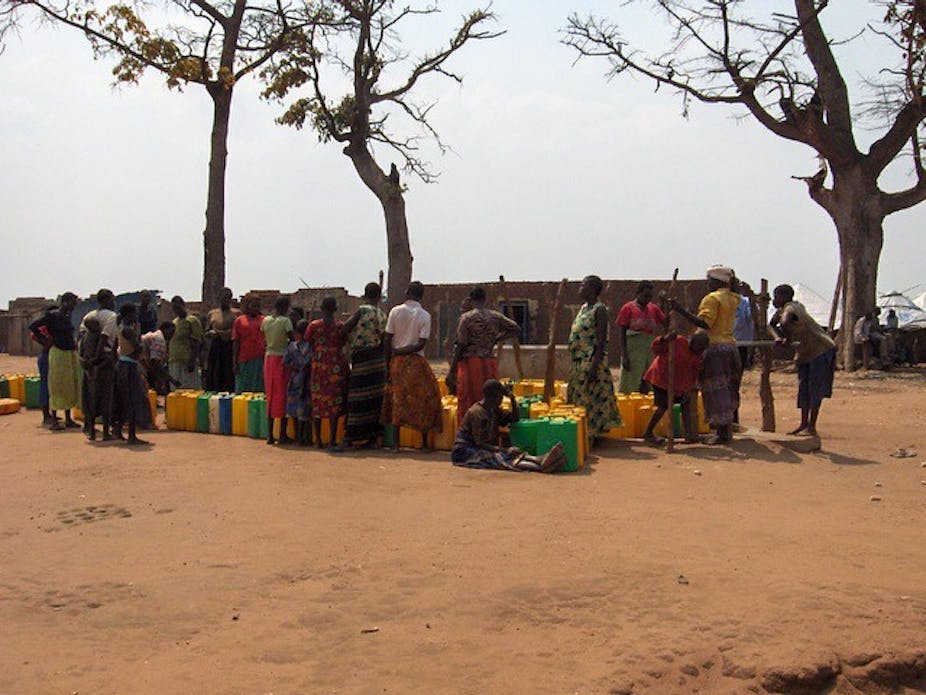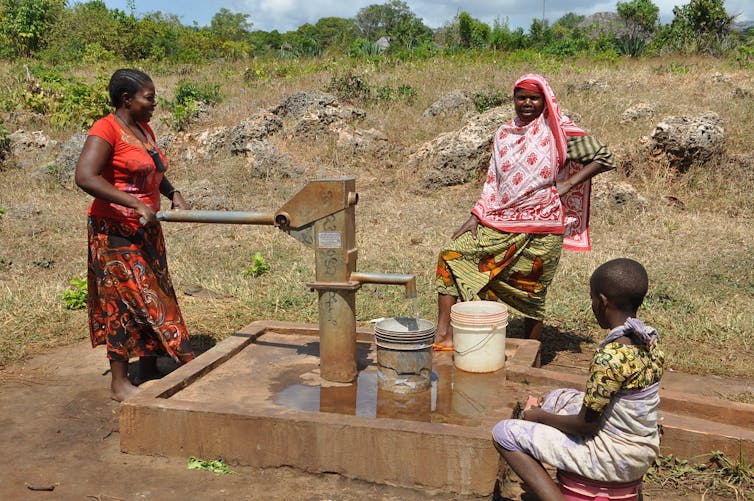
Achieving universal and equitable access to safe and affordable drinking water for all by the year 2030 is considered fundamental in attaining the Sustainable Development Goal 6. But about 4 billion people, nearly two-thirds of the population of the world, face severe water scarcity and over 2 billion people live in countries experiencing high water stress.
Water supply is not equitably distributed across the globe. In sub-Saharan Africa, about 40% of the population lacks safe drinking water.
Another dimension of water inequality is gender. A study conducted in 25 sub-Saharan African countries by UNESCO World Water Assessment Programme in 2019 estimated that women spend not less than 16 million hours daily to collect drinking water, whereas their male counterparts spend 6 million hours.
These inequalities are evident in Ghana. About 38% of the population lack access to potable water and there are regional disparities and urban-rural dichotomies in water supply. Discussions about supply have paid little attention, though, to the disproportionate effects of water insecurity on women.
To fill the gap, our study examined the gendered implications of sporadic water supply for livelihoods in Tatale-Sanguli District.
We discovered that water shortages affected both men and women in the district, but weighed more on women than men. Women and girls were found to be the primary drawers of water for household needs, because of patriarchal cultural norms.
Our findings should inform policy intervention through the district assembly. Interventions that diversify livelihoods could reduce the vulnerability
of women to water shortages.
Water supply in the district
The study was conducted in the Tatale Township and two neighbouring communities of Yachado and Kpalbutabo in the Tatale-Sanguli District of the northern region of Ghana. Subsistence agriculture is the predominant economic activity.

The district experiences a short rainy season and a long and more pronounced dry season. The main sources of water supply are streams, rivers, shallow ponds, hand-dug wells, boreholes and rainwater. While water supply systems are generally inadequate, the problem worsens during the dry season, when most of the streams dry up.
Although technologies such as rooftop harvesting for rainwater for domestic use and agriculture exist, storage facilities are lacking. Consequently, supply is sporadic in the dry season from November to May.
Who is more burdened, how and why?
The population of the district is 60,039 and females constitute 50.4% of it. Most women are engaged in some form of agricultural activity.
Water is required for different productive activities pursued by both men and women. But the responsibility of fetching water in the study communities rests heavily on girls and older women. The strict gender roles and cultural norms in the Tatale-Sanguli District make the collection and use of water a gendered issue.
A male participant in Kpalbutabo put it this way:
Men don’t suffer like women when the entire household lacks water … women are more concerned about water because they take care of children. Women don’t expect their husbands to bath children or wash their clothing. It is their responsibility. So when water becomes scarce, women tend to have no peace of mind.
A combination of reproductive and productive workload makes women more susceptible to the drudgery of sporadic water supply than men. According to 65% of female participants who took part in the survey, they spent about three to four hours travelling over a long distance daily to fetch water.
Water shortage often creates rancour and tension at home and with neighbours at public water supply points. One woman in the study noted that when water is scarce women have less sleep and go to farm late; life generally becomes difficult for them.
When the water supply becomes critical, men and boys sometimes help by fetching it on bicycles, motor bikes or tricycles. Women lack these assets. Thus, disparities in access to physical assets in favour of men add to women’s burden.
Another aspect of gender disparities is that during menstruation, the cultural norm is that women must have a separate container of water for their own use. They have to fetch enough water for men to use before their period starts because it is a taboo for some men to drink water collected by women who are menstruating.
When water supply for agriculture is limited, some younger women and men move away temporarily to find different ways of earning a living, leaving older family members behind.
How to relieve women’s burden
To relieve the people of the Tatale-Sanguli District from the drudgery of limited water supply, we recommend that the local government and non-governmental organisations should intensify their water provision efforts in the district. They can do this by expanding systems of pipes, boreholes and hand pumps to reach communities.
Their efforts should recognise the gendered effects and differentiated burdens of water use. One way would be for the district assembly to aim at diversifying livelihoods.
This article was co-authored with Emmanuel Bintaayi Jeil. He holds an MPhil in Geography and Rural Development from the Kwame Nkrumah University of Science and Technology, Kumasi-Ghana.![]()
Kabila Abass, Senior Lecturer, Department of Geography and Rural Development, Kwame Nkrumah University of Science and Technology (KNUST)
This article is republished from The Conversation under a Creative Commons license.

